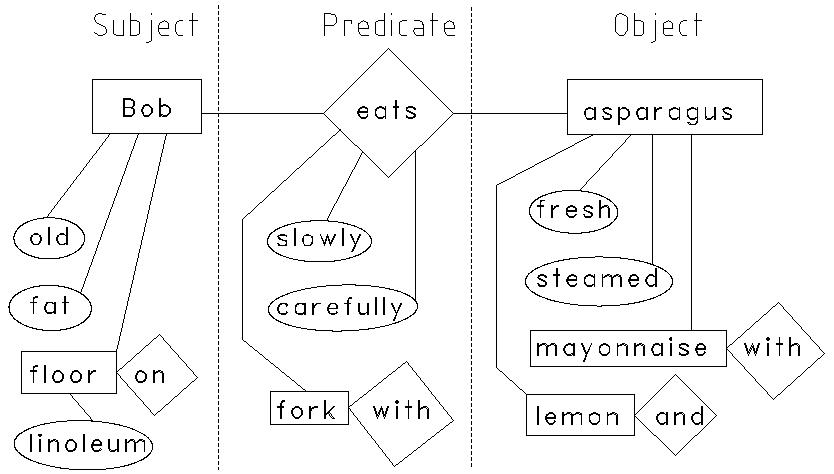
In the sentence above 'on' would actually be 'located at',
'mayonnaise with' would be 'mayonnaise accompanied by' and
'fork with' would be 'fork is interface for'. I used the
smaller English words to conserve space in the diagram. We
might also consider 'linoleum' to be a noun so that it would
require the predicate "is feature of" to create a proper
prepositional phrase.
Another example of modifying a prepositional phrase would be, "Bob. old. tired. chair. in. green. slept." The chair in this sentence is 'green', Bob is (probably) not. The Term 'chair. in.' is the target of the adjective 'green' because it immediately precedes the adjective. Also notice that there is no object in this sentence.
This need not be a major consideration since subordinate noun descriptions can always be broken off and presented as separate sentences. For example "Bob. old. tired. chair. in. slept." "Chair. is. green." This second method takes longer, but is easier to understand.